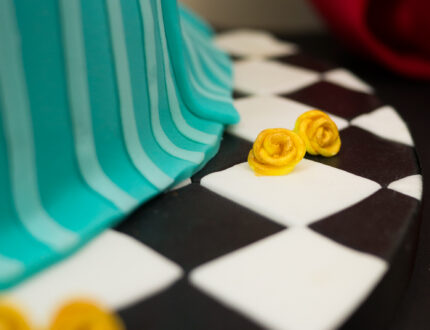Tutorial Preview
1. Levelling and Carving the Cake Layers
Struggling for time? Why not watch the entire tutorial in under 18 mins?
Janette starts off by showing us how to level the layers in a very quick and simple way using a serrated knife. Bare in mind that this is going to be carved so it doesn’t have to be perfect. Then it’s onto carving it into a lovely big flowing dress shape. Remember to give the feeling of the dress having a front and back so don’t make the curve too centred. Keep the larger offcuts as you may need them for when you are filling out the back of the dress later in the tutorial.
2. Finishing the Carving and Covering in Ganache
3. Covering the Board and Making Rose Petals
4. Adding Shape and Sugarpaste to the Dress
5. Adding Blue Panels to the Dress
6. Making the Bustle for the Dress
7. Making the Body
8. Working on the Head
9. Working on the Face
10. Working on the Hair
11. Inserting the Body and Attaching the Arms
12. Lesson 12 Making the Mask and the Feathers
13. Finishing the Roses and Adding the Decorations
14. Finishing Touches
15. Other Ideas
16. Fast Forward
17. Video Blog
Paul introduces us to Janette McPherson of Janette McPherson Cake Craft and her lovely Masquerade Ball cake. This week’s tutorial will be covering cake carving and modelling and you will also learn a great way to make a beautiful tiled floor effect cake board. This tutorial is aimed at intermediate level and beginners looking for a challenge and will take two half days to make, to allow for drying time. We look forward to seeing your take on this wonderful cake – please share your creations on our Facebook Page as well as Janette’s!








